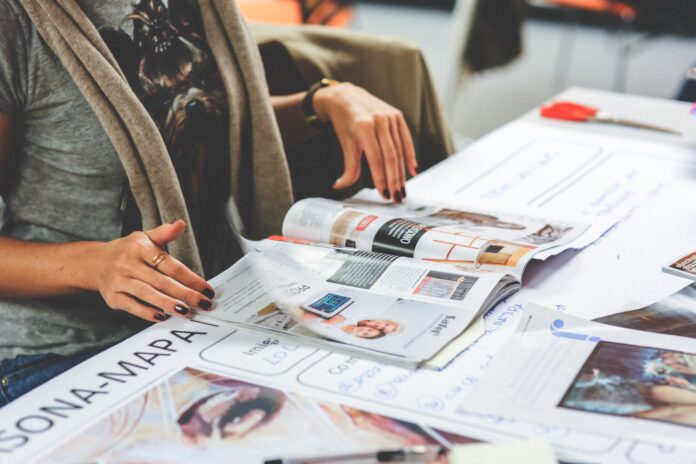Creating a fashion magazine involves a meticulous process of planning, design, and execution. A well-crafted design brief serves as the foundation for a cohesive, engaging, and visually appealing magazine. This document outlines the essential components of a fashion magazine design brief, providing a detailed example for anyone embarking on this creative journey.
What is a Design Brief?
A design brief is a written document that communicates the goals, vision, and requirements of a project to designers, editors, and other stakeholders. In the context of a fashion magazine, it ensures that everyone involved in the project is aligned, from the creative director to the layout artist.
Why is a Design Brief Important?
- Clarity of Vision: It defines the magazine’s tone, style, and purpose.
- Efficiency: It streamlines the workflow by providing clear guidelines.
- Consistency: It helps maintain a uniform aesthetic across all pages.
- Collaboration: It facilitates effective communication among team members.
Components of a Fashion Magazine Design Brief
1. Project Overview
This section summarizes the magazine’s purpose, target audience, and overall goals.
Example: The magazine, titled “Vogue Essence,” aims to celebrate contemporary fashion trends while empowering readers to embrace individuality. The target audience includes fashion enthusiasts aged 18-35 who value creativity and self-expression.
2. Brand Identity
Outlining the magazine’s core identity ensures the design aligns with its branding.
Example:
- Tone: Sophisticated, modern, and inspiring.
- Style: Minimalist layouts with bold typography and high-contrast imagery.
- Color Palette: Black, white, gold, and blush pink.
3. Content Breakdown
Detail the type of content to be included, such as features, interviews, and photo spreads.
Example:
- Feature Articles: In-depth pieces on sustainable fashion and emerging designers.
- Interviews: Conversations with industry icons.
- Photo Spreads: Seasonal fashion collections.
- Columns: Styling tips, trend analyses, and reader Q&A.
4. Design Specifications
Provide technical details to guide the layout and visual design.
Example:
- Page Dimensions: 8.5 x 11 inches.
- Typography: Sans-serif fonts for headlines, serif fonts for body text.
- Margins: 0.5-inch margins on all sides.
- Grid System: 12-column grid for flexibility.
5. Mood Board
Incorporate visual references to convey the desired aesthetic.
Example: Include images of fashion editorials, typography samples, and color swatches that reflect the magazine’s theme.
6. Target Audience
Define the demographic and psychographic profiles of readers.
Example: Primary readers are young adults passionate about high-end and streetwear fashion. They are tech-savvy, socially conscious, and appreciate innovative design.
7. Competitor Analysis
Analyze similar publications to identify gaps and opportunities.
Example: Competitors include “Elle,” “Harper’s Bazaar,” and “Glamour.” Differentiation will focus on promoting niche, eco-friendly fashion brands.
8. Visual Hierarchy
Explain how elements should be prioritized on the page.
Example:
- Headlines should dominate with bold fonts.
- Subheadings should provide supporting details.
- Images must be large and striking, taking precedence over text.
9. Timeline
Set realistic deadlines for each phase of production.
Example:
- Week 1: Initial concepts and mood board.
- Week 2: Draft layouts.
- Week 3: Finalize designs.
- Week 4: Print production and quality check.
10. Budget
Include a financial overview to ensure cost-effective decisions.
Example: The design and production budget is capped at $20,000, covering design software, freelance designers, and printing costs.
11. Call-to-Action (CTA)
Define the desired reader interaction.
Example: Encourage readers to visit the magazine’s website for exclusive digital content and subscribe for future issues.
12. Printing and Distribution
Outline the logistics of printing and delivering the magazine.
Example:
- Printing: 5,000 copies.
- Distribution: Online sales, boutique stores, and fashion events.
13. Photography Guidelines
Provide directions for photoshoots to maintain brand alignment.
Example: Images should feature natural lighting, vibrant colors, and diverse models to reflect inclusivity.
14. Revisions and Feedback
Set guidelines for review cycles and revisions.
Example: Allow up to three rounds of feedback before finalizing the design.
15. Contact Information
Include details of key stakeholders for seamless communication.
Example:
- Creative Director: Jane Doe (email: jane@vogueessence.com)
- Art Director: John Smith (email: john@vogueessence.com)
Conclusion
A detailed fashion magazine design brief is essential for creating a publication that captivates readers and represents your brand effectively. By clearly outlining objectives, visual guidelines, and logistical details, the brief serves as a roadmap to success.
FAQs
1. What is the purpose of a design brief for a fashion magazine?
A design brief ensures that all stakeholders are aligned on the project’s vision, goals, and execution, resulting in a cohesive and visually appealing magazine.
2. How do you create a mood board for a fashion magazine?
Gather visual references such as color swatches, typography samples, and images that reflect the desired aesthetic and theme of the magazine.
3. What should be included in the target audience section?
Demographic and psychographic profiles, including age, interests, lifestyle, and preferences, should be detailed in this section.
4. How do you ensure consistency in a magazine’s design?
Use consistent typography, color schemes, grid systems, and design elements throughout the magazine.
5. What is the ideal timeline for designing a fashion magazine?
A typical timeline includes 1-2 weeks for concept development, 1-2 weeks for layout drafts, and 1-2 weeks for revisions and finalization.
